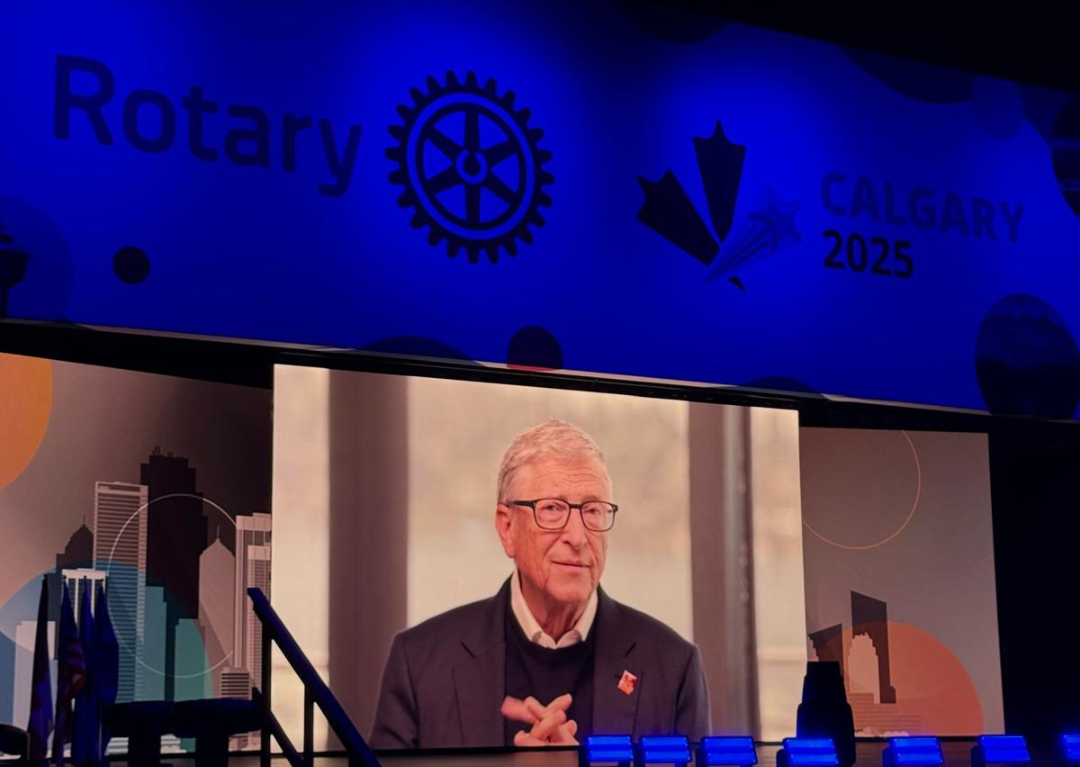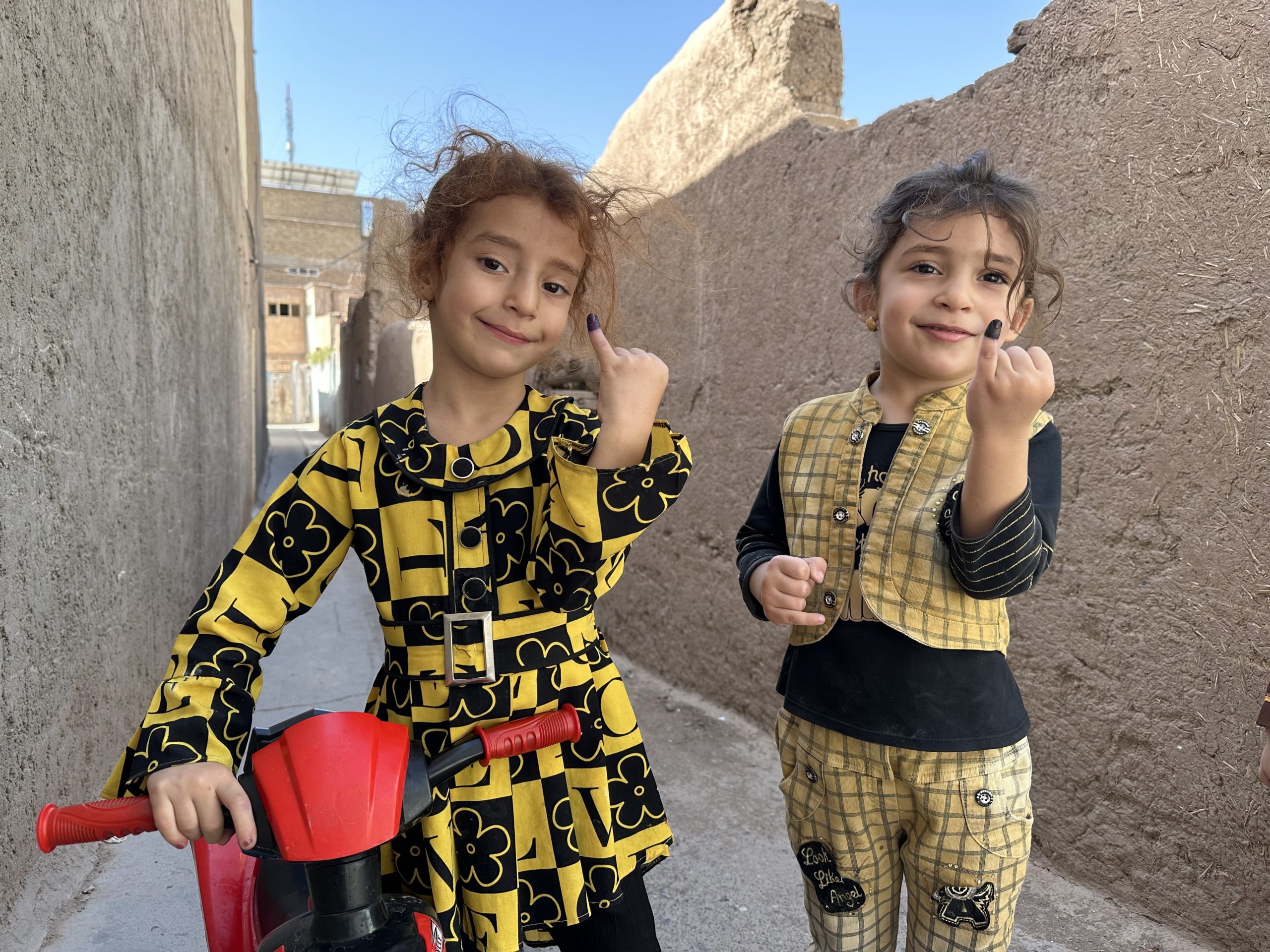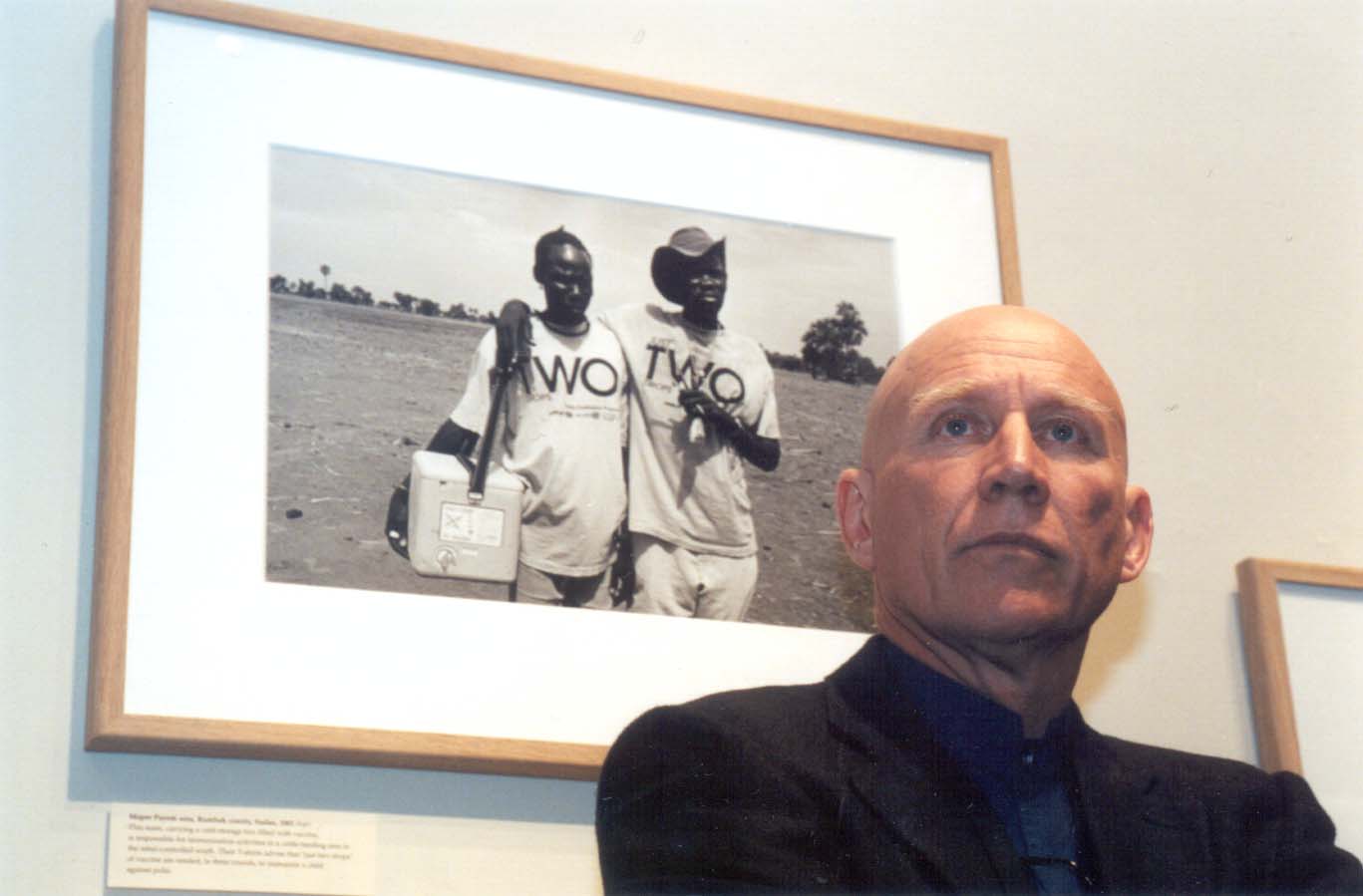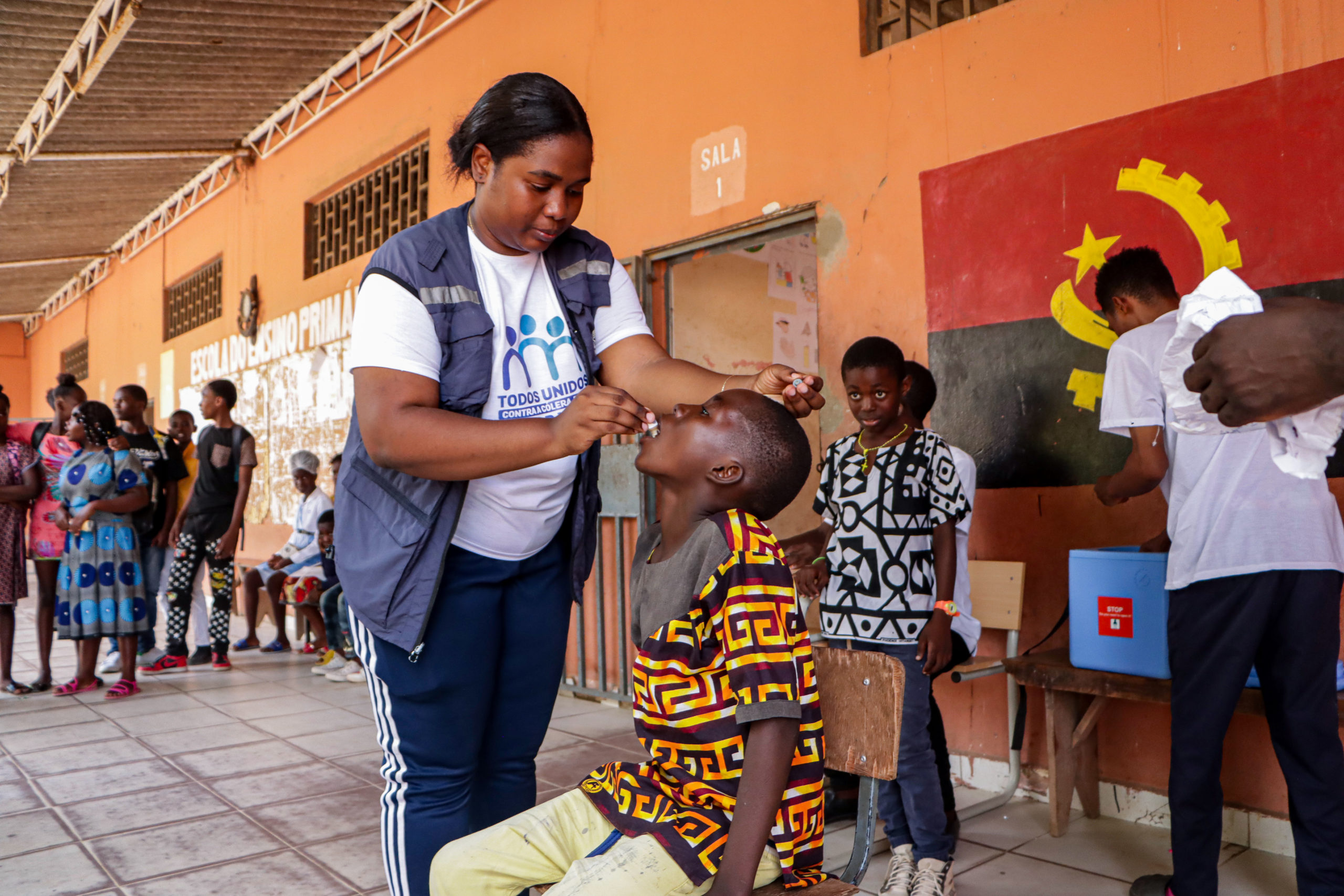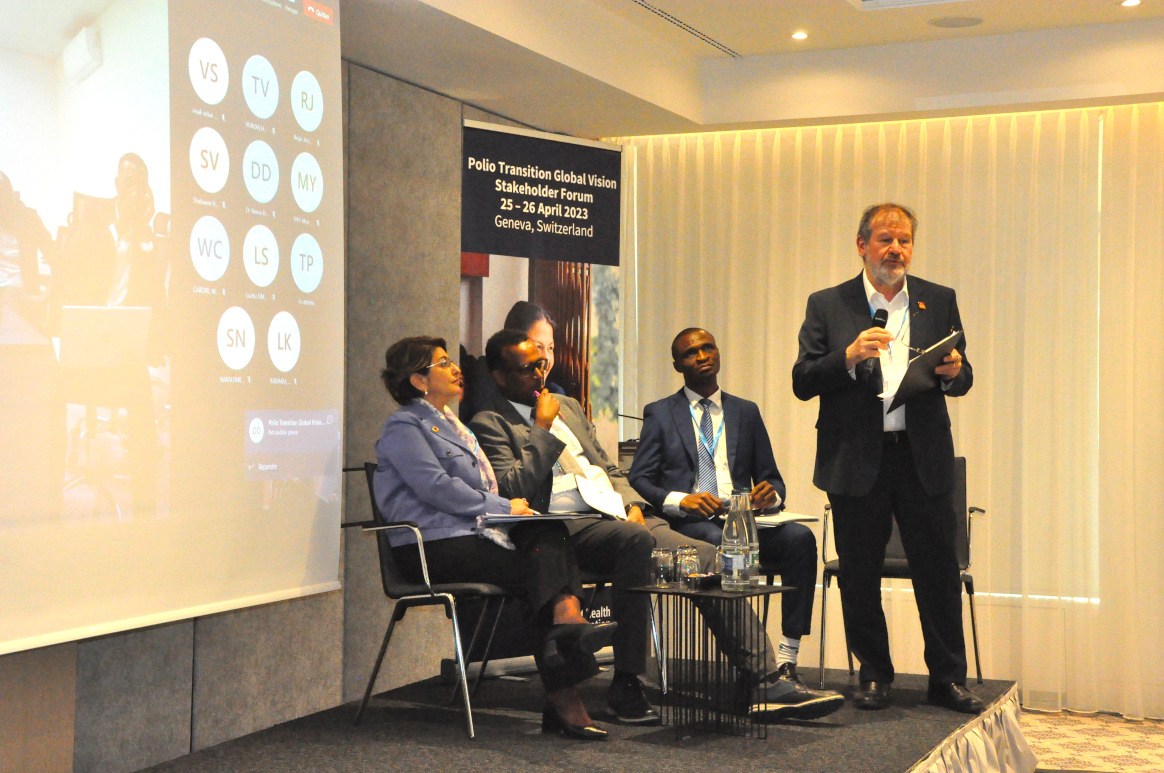
In Somalia, integrated public health teams, built on the polio network, deliver a broad range of health services, despite challenges posed by ongoing polio outbreaks and the impact of the COVID-19 pandemic. In the Central African Republic, thanks to strong advocacy by the civil society, sustaining polio eradication remains on the health agenda. Meanwhile, India’s significant progress, builds on transforming the networks built initially to eradicate polio to strengthen the country’s essential immunization programme.
From 25 – 26 April, national, regional and global stakeholders, including country representatives, global health partners and donors, and members of civil society, gathered in Geneva to share their experiences of polio transition. The objective of the two-day forum was to agree on the future direction of polio transition, including adjustments that are needed, building on lessons learned.
In his opening remarks at the forum, Dr. Tedros Adhanom Ghebreyesus, the Director General of the World Health Organization (WHO), underscored the rationale for the transition process, “As we move closer to a polio-free world, we must work to sustain the incredible infrastructure that has been set up to eradicate polio.”
“A transformation of this scale and complexity has never been done in public health. We have a huge challenge, and a huge opportunity.”
The challenges and opportunities of a successful transition were recurring themes during the forum. Although much progress has been made since 2018, the COVID-19 pandemic, political and economic instability and a more constrained fiscal environment have complicated transition efforts and strained health systems in many countries. To overcome this, countries have continually adapted transition planning for their contexts, guided by national health priorities, towards strengthening health outcomes, especially in the areas of essential immunization, health emergencies, and primary health care.
Reflecting on these lessons, stakeholders agreed that the renewed global vision for transition should be inspiring, actionable, practical and relevant to all countries. They emphasized that providing coordinated technical and financial support, aligned with country priorities, is critical for success. At the national level, countries should adapt flexible strategies, with realistic milestones.
Strong essential immunization programmes were recognized as crucial for achieving and sustaining polio eradication. Meanwhile, maintaining the poliovirus surveillance system and laboratory network was identified as a critical priority to protect a polio-free world and strengthen broader disease surveillance efforts. It was recognized that there is scope to systematically integrate gender, equity, human rights and the health of refugees and migrants into transition planning, aligned with the country context. Stakeholders also discussed the potential ‘enabling factors’ to make transition a success, and ‘risks’ that need to be mitigated during transition, as well as the specific responsibilities of different stakeholders.
The outcomes of the forum will inform the new Global Vision for Polio Transition that will be shaped by the end of 2023. The vision is an essential component of the post-2023 strategic framework, alongside Regional Strategic Plans, tailored to regional and national context, and a Monitoring and Evaluation Framework to track progress and ensure transparency and accountability.
Dr Tedros concluded his remarks by noting the potential to strengthen health systems through a successful transition.
“Eradicating polio and safeguarding its legacy with stronger health systems will be a gift for our children, and our children’s children.”
Following the forum, Member States offered further guidance on transition during the 76th World Health Assembly, building on interventions made during the 152nd Executive Board meeting. Member States highlighted that the polio transition strategic framework should aim to integrate polio functions into Primary Health Care towards Universal Health Coverage, align with WHO’s evolving work on pandemic preparedness, resilience and response, and focus on strengthening routine immunization, surveillance, outbreak management and response, national capacity building and partnerships. Considering the ongoing risk of spread of polio, Member States emphasized to have a risk-based approach to transition, backed up by realistic timelines and clear milestones.
The strategic framework will be developed through a consultative process to ensure that the next phase of transition is fit for purpose.
